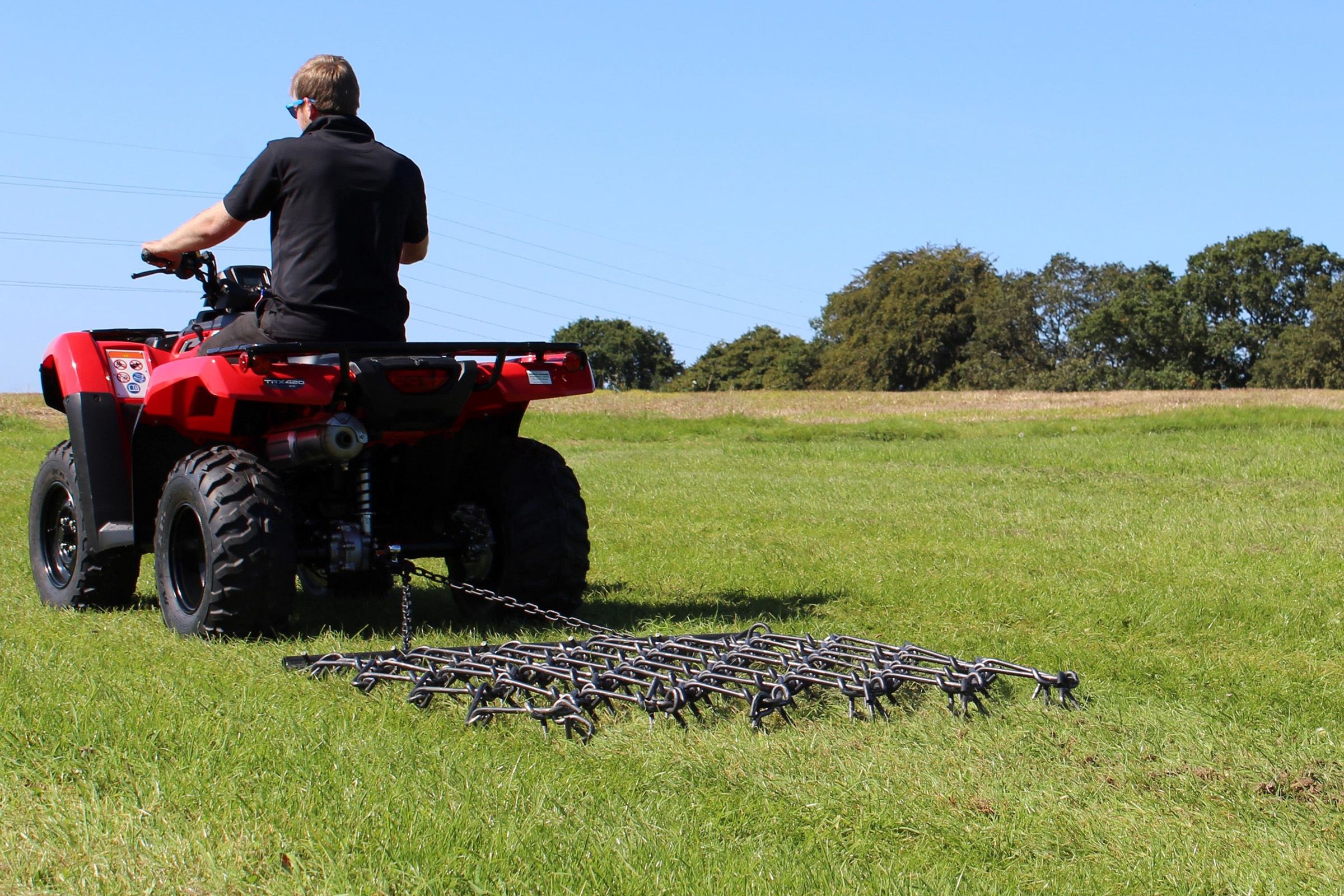
How to Choose a Chain Harrow for a Quad Bike / ATV
Learn how to select the perfect chain harrow for your ATV, considering factors such as size, weight, type, and tine configuration for efficient soil management. Optimize your quad bike's capabilities with a durable, easy-to-maintain harrow suited for varied agricultural tasks.
Choosing the Right Chain Harrow for Your Quad Bike or ATV
When choosing a chain harrow for use with a quad bike or ATV, there are several factors to consider to ensure that you select the right equipment for your specific needs. Here’s a guide to help you make an informed decision:
Key Considerations for Selecting a Chain Harrow
1. Size and Weight
Compatibility: First, ensure the chain harrow is compatible with the power and towing capacity of your quad bike or ATV. The harrow should not be so heavy that it strains the vehicle, but it should be substantial enough to effectively penetrate and aerate the soil.
Coverage: Consider the size of the area you intend to work on. Larger plots may require a harrow with a broader reach to make the task more efficient, while smaller or more confined areas might need a narrower option to maneuver easily.
2. Harrow Type
Drag Harrows: These are the simplest form, consisting of a mat of chains and spikes that are dragged over the soil. They are easy to use and generally lighter, making them a good match for quad bikes and ATVs.
Framed Harrows: These typically are not compatible with ATVs as they require a tractor's 3-point linkage to operate. These harrows are more structured, with a rigid frame that holds the chains and tines. They often allow for more adjustments in terms of depth and aggressiveness but can be heavier and require more power to pull effectively.
3. Tine Configuration
3-Way Tines: For versatility, consider a harrow that offers adjustable tine settings. This allows you to set the tines for aggressive harrowing, less vigorous action, or an upside-down setting for smoothing and leveling. This feature is particularly beneficial if you will be working with various soil conditions or performing multiple tasks such as breaking soil, smoothing out areas, or incorporating seeds or fertilizers into the soil.
4. Build Quality
Durability: Look for harrows made from high-quality, durable materials capable of withstanding the type of soil in your area, especially if working with rocky or compacted soils.
Maintenance: Consider how easy it is to maintain the harrow. Stainless steel or coated options may offer added resistance against rust and wear.
5. Ease of Attachment
Hitch Type: Ensure the harrow can be easily attached and detached from your ATV or quad bike. Most drag harrows come with a simple pin hitch, which is suitable for quick connections.
Lifting Capability: If considering a framed harrow, check if your ATV or quad bike can support lifting mechanisms if the harrow is designed to be lifted for transport or adjustment.
6. Manufacturer and Support
Brand Reputation: Choose a harrow from a reputable manufacturer known for quality agriculture or land management equipment. Reliable customer support for servicing, parts, and warranty claims is also crucial.
Reviews and Recommendations: Look at reviews from other users, particularly those with similar use cases to yours. User experiences can provide insight into how the harrow performs in real-world conditions.
7. Budget Considerations
Cost-Effectiveness: While your budget will be a significant factor, it's important to balance cost with quality and the specific features you need. Investing a bit more upfront in a robust and effective tool can save money on replacements and repairs down the line.
Conclusion
Selecting the right chain harrow for a quad bike or ATV involves considering the harrow's size, type, build quality, and adaptability to different tasks and soil conditions. By carefully assessing these aspects, you can find a tool that not only matches the capabilities of your vehicle but also efficiently meets the demands of your land management tasks. Remember, a well-chosen harrow can be a valuable asset for enhancing soil health and improving productivity in agriculture, pasture management, or land restoration projects.










